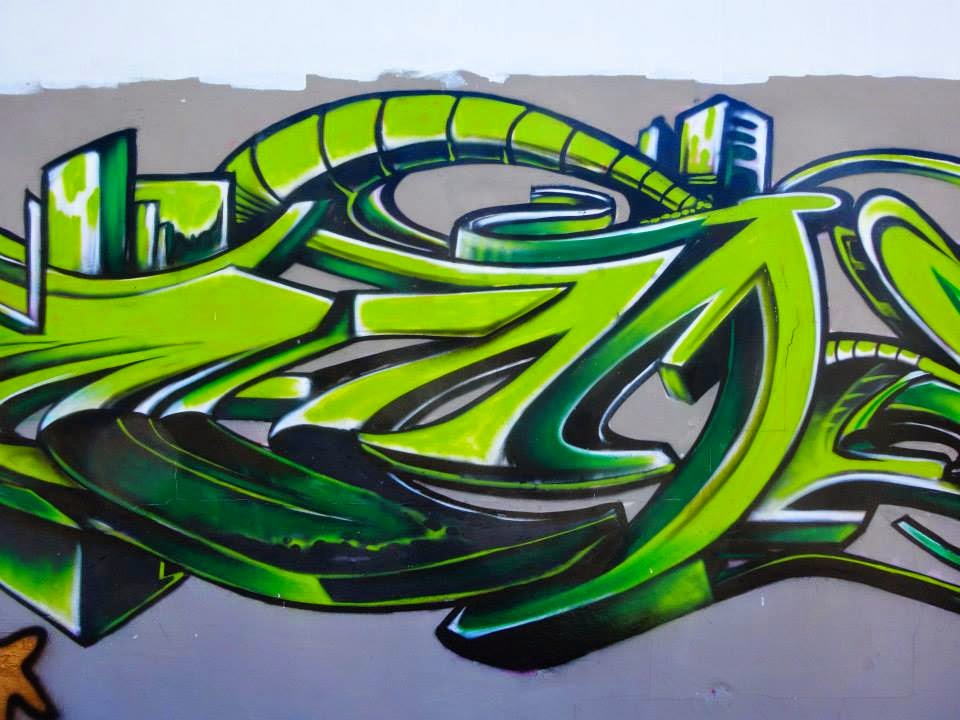Graffiti is writing or drawings that have been scribbled, scratched, or sprayed on a wall or any other surface, often illegally and in a public place. This urban or street art sometimes expresses underlying social and political messages and a whole genre of artistic expression based upon spray paint styles. In many urbanized areas, these drawings have become free public art displays attracting millions of tourists for their enjoyment; and some artists like Banksy have even become international celebrities.
Everything started with the commercialization of the hip-hop movement in the late 1970's. In 1979, the movement gained momentum in cities like New York, London, and Paris, where graffiti artists became the symbol of neighborhoods. In most cases, even with legally painted graffiti art, graffiti artists chose (and continue to choose) anonymity, sometimes using pseudonyms. This is because some people still view this practice as vandalism, or because the artists view it as a way to express themselves without unnecessary stardom. One could be admiring an amazing piece of street art but could be ignorant of the artist behind it. Until decades ago, graffiti was viewed as bad and was synonymous with impoverishment. Then art communities like SoHo in New York started to pop up all over the world; and with this, walls were covered by urban art that made the public see these artists in a different way. So, can this under-appreciated talent add value to our streets?
Let's look at Wynwood down in Miami. Also referred to as "Little San Juan", and commonly known as "El Barrio" as many Puerto Ricans began immigrating to this Miami neighborhood from the island and northeastern cities in the 1950's; Wynwood has seen the biggest gentrification process in urban Florida. What started as a big group of warehouses for artists and cafes became a magnet for graffiti artists.That's when Tony Goldman, one of the pioneers behind Wynwood's gentrification, decided to bring more than 30 artists from around the world to create what is now the "Wynwood Walls", leading to an incredible increase in other street art in the surrounding area. This large arts presence brought upon Miami what is conceived as a new hipster neighborhood. Then, tourists (and their money) came from all over the world to take pictures of these incredible murals, becoming now one of the hottest spots in town. But while Wynwood grew due to its heavy art presence, it became too international for local artists to handle thus disfranchising them from the local art scene. Little by little, this amazing local talent has been relocating to Broward, and some of it to the next gentrification battleground in urban South Florida: Flagler Village, Fort Lauderdale's hottest, up-and-coming neighborhood.
For months now, and especially during FAT Village's ArtWalk, thousands come and enjoy the local art scene; and this has become an important event for the city's urban core. Many participants such as Helium Creative, C&I Studios, and Cadence have promoted this up-and-coming art district, once a bunch of warehouses as well, to the point that the neighborhood is the forefront of a movement where arts and technology are married in a way only possible due to the rise of digital technology. Doug McGraw, the pioneer behind this urban refurbishment, has pushed for this area to become more than just a bunch of startups, a vision he had many years ago.
But while both Wynwood and Flagler Village started this radical urbanization process pretty much the same way, South Florida's new gentrification experiment has kept it very local. As it happened down in Miami, local graffiti artists have brought their talents to "the Village". They have taken over of a stretch right next to the FEC RR tracks, making this area an amazing open-air museum that many in town do not even recognize. One of the biggest contributors has been the guys from Rolling Stock Gallery and their pals. These artists (On Instagram: @chrispykravitz, @miroizm, @stockroll, @atomiko, @newor_enivid, @chitownslugga, @bulk_styles, among others) have created, without expecting it, a spot for Broward's hipsters to take pictures and mingle just as Wynwood did down in Dade.
If done right, and plans for a liner park along the railroad tracks move along, this could become a tourist attraction that could potentially bring more retail, restaurants, lounges, and cafes; and ultimately, make our urban core more walkable and livable at the same time. What was once thought to be vandalism; nowadays, seems to appeal to those who want to enjoy art while living an urban lifestyle. Who knew?!
























No comments:
Post a Comment